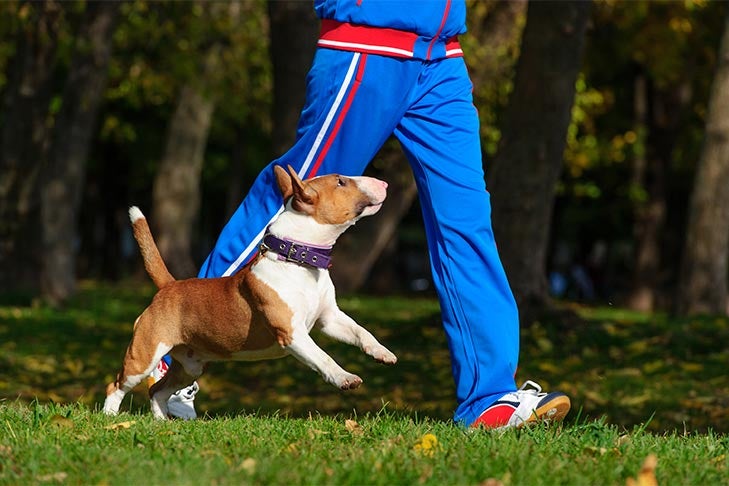Safety Concerns
As tempting as it might be to leave your dog to play in the yard for long periods of time, there are some serious risks to consider. Extremes of heat and cold can negatively impact all dogs. Some breeds, like brachycephalic breeds (dogs with a flat and wide skull shape), are especially heat intolerant, while others, like Italian Greyhounds, are cold intolerant. Leaving these dogs in the yard unsupervised can lead to heat stroke or hypothermia, and even mild days can be too warm if your dog does not have adequate shade and shelter from the elements.
Weather conditions are not the only threat. Small dogs make appealing targets for wildlife like coyotes and hawks, and potential theft is a real concern for many dog owners.
Sometimes our dogs are their own worst enemy. Enthusiastic chewers might ingest a foreign object or choke on a stick or toy. Escape artists may dig, climb, or squeeze their way through fences, and backyards with pools pose the risk of drowning. The safest way to encourage yard play is to make sure you or another trusted person are present.
Dogs Need More Than a Yard for Daily Exercise
You may have heard someone say, “My dog just needs a home in the country with a big yard.” This phrase is often used as an excuse for hyperactivity or obesity, but a big yard alone won’t solve these problems.
Like us, dogs need mental stimulation and regular exercise to stay happy and healthy. They also share our social natures. When you watch your dog out in the yard, you may have noticed that he spends a lot of time lying in his favorite spots, rather than running around. After all, playing catch with yourself is nowhere near as fun as playing with a friend, and most dogs need encouragement from their owners to exercise.
Regular games of fetch, training sessions, and playdates with other dogs in the backyard are all great ways to keep your pup in shape. Exercise in the yard, however, isn’t enough. Imagine spending all your time at home. Even the best home fitness center and an endless supply of your favorite books and TV shows might get boring after a while.
Dogs are no different. The sights, sounds, and smells of the world beyond your house offer much needed stimulation, and help prevent destructive, boredom-related behaviors like barking and inappropriate chewing. Plus, time outside the home exposes your dog to new experiences, which is essential for continued socialization.

Is a walk around the block or playing fetch in the backyard enough for your pooch? If your dog could talk this is what she would tell you.

8 Signs Your Dog Isn’t Getting Enough Exercise (NEVER ignore!)
Welcome to another installment of “Debarking Pet Myths,” our monthly series that addresses common myths, misconceptions and old wives’ tales about dogs, cats and their nutrition.
A fenced backyard is a great asset for a household with pets. It’s generally a safe environment, there are usually no other animals to worry about (except the local wildlife), and it’s convenient — open the door and you’re there. Pets can spend many fun-filled hours in the backyard, but since pets need daily exercise of at least 30 to 90 minutes (or more) depending on their age, breed and lifestyle, is free playtime in a fenced backyard enough exercise? Or do pets need more structured exercise in addition to yard time?
Like some people, some pets are not exercise fanatics and require motivation to get their legs moving and heart pumping. For those pets that are a little motivation-challenged, an unsupervised afternoon in the backyard is likely to mean finding a comfy, sunny spot to lie in and snooze for a while. Not the outcome you wanted, if exercise was the goal. For cats, an outdoor cat house can provide them a safe place to play (or sleep) outside, but they may not get the exercise they need in it.
The other personality that may have some pets looking for an exercise alternative in the backyard is the mischief makers. You may say “go exercise,” but they have other thoughts and activities on their mind.
There are some pets (they know who they are) who will find the new plant you just planted and dig it up. Then there are the wildlife chasers who will spend the afternoon hunting, playing with or chasing birds and wildlife, which may provide some exercise but is never a good scenario for your pet or the wildlife. There are also the barkers and the howlers — the dogs who like to tell the whole neighborhood that they’re outside and loving it (or hating it if there’s a tormenting squirrel on the fence).